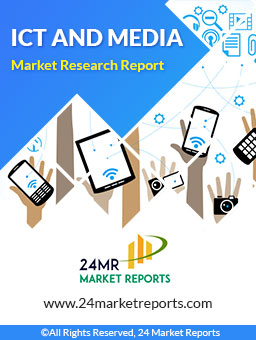
Download FREE Report Sample
Download Free sampleMARKET INSIGHTS
The global equipment leasing software market was valued at USD 763 million in 2024. The market is projected to grow from USD 817 million in 2025 to USD 1,221 million by 2032, exhibiting a CAGR of 7.1% during the forecast period.
Equipment leasing software, also referred to as asset leasing software, manages the complete leasing lifecycle from origination through end-of-lease activities. These solutions enable businesses to efficiently manage portfolios of leased assets including heavy machinery, vehicles, and IT equipment. Core functionalities typically include credit evaluation workflows, payment processing, contract management, and asset tracking.
The market growth is being driven by increasing adoption across industries facing capital expenditure constraints and seeking operational flexibility. Cloud-based solutions currently dominate with over 70% market share due to their scalability and remote access capabilities. While North America leads with 40% market share, Europe and Asia-Pacific are emerging as high-growth regions. Key players like Odessa, NETSOL Technologies, and Constellation Financing Systems are expanding their product portfolios through strategic acquisitions and technology partnerships to capture this growing demand.
Growing Demand for Operational Efficiency in Asset Management
The equipment leasing software market is experiencing substantial growth driven by the increasing need for operational efficiency in asset management across industries. Businesses are recognizing the value of automated leasing workflows to reduce manual errors and improve decision-making. The global push toward digital transformation has accelerated adoption rates, with over 62% of leasing companies reporting improved portfolio management after implementing specialized software solutions. Recent advancements in artificial intelligence and machine learning integration are further enhancing predictive analytics capabilities, allowing firms to optimize asset utilization and reduce idle time.
Rising Popularity of Subscription-Based Business Models
To know more about market statistics, Download a FREE Sample copy
The shift toward subscription-based and 'as-a-service' business models across multiple industries is creating significant demand for robust leasing software solutions. The equipment-as-a-service market is projected to grow at 15% annually, requiring sophisticated platforms to manage complex leasing arrangements. These solutions enable businesses to track usage-based billing, automate renewals, and manage multi-tier pricing structures efficiently. Equipment manufacturers are increasingly bundling software solutions with their hardware offerings, creating new revenue streams while improving customer retention.
Regulatory Compliance Requirements Driving Adoption
Stringent financial reporting standards such as IFRS 16 and ASC 842 have made leasing software nearly essential for compliance. These regulations require detailed tracking of lease obligations and right-of-use assets, tasks that are impractical to manage manually at scale. The accounting changes have particularly impacted sectors with large equipment fleets, including transportation, healthcare, and construction, where companies are prioritizing software solutions that can automate compliance reporting. This regulatory pressure has become one of the most significant drivers for mid-market and enterprise adoption in recent years.
High Implementation Costs and Complexity
While the benefits of leasing software are clear, implementation challenges remain a significant barrier to adoption. Enterprise-grade solutions often require 6-12 month deployment cycles and substantial upfront investments in both software licensing and professional services. Many organizations, particularly small and mid-sized leasing companies, find the total cost of ownership prohibitive, with integration to existing ERP and accounting systems adding further complexity. This financial barrier has slowed market penetration in price-sensitive regions and among smaller operators.
Data Security and Privacy Concerns
Equipment leasing software handles sensitive financial and asset data, making security a top concern for potential buyers. Increasing cyber threats and evolving data protection regulations have made companies cautious about cloud adoption. Recent surveys show that 45% of financial executives cite data security as their primary hesitation when evaluating leasing platforms. Providers must continuously invest in security certifications and compliance measures to alleviate these concerns, which adds to development costs and potentially limits innovation in other areas.
Resistance to Process Change in Traditional Leasing Firms
Many established leasing companies continue to rely on legacy systems and manual processes due to organizational inertia. The industry's traditional nature means decision-makers often underestimate the ROI of digital transformation, preferring familiar spreadsheet-based workflows. Training staff on new systems represents another challenge, with 30% of implementation projects facing user adoption issues according to industry benchmarks. This resistance is particularly pronounced in regions with less mature technology ecosystems, creating uneven market growth globally.
Expansion of Small and Medium Business Segment
The underserved SME market represents a significant growth opportunity, with only 22% adoption currently among smaller leasing operators. Software providers are developing scaled-down, modular solutions with simplified pricing models to address this segment. Cloud-based offerings with pay-as-you-go subscription models are proving particularly attractive, eliminating large upfront costs. As digital literacy improves among small business owners and affordable mobile solutions emerge, this segment is expected to drive nearly 40% of new growth through 2030.
Integration with IoT and Connected Equipment
The proliferation of IoT-enabled equipment is creating new possibilities for predictive leasing models. Real-time equipment usage data can enable dynamic pricing, proactive maintenance alerts, and usage-based billing - features that are transforming traditional leasing paradigms. Leading providers are forming partnerships with equipment manufacturers to build native integrations, with the total addressable market for IoT-connected leasing solutions projected to exceed $850 million by 2027. This technological convergence represents one of the most promising avenues for product differentiation.
Emerging Market Expansion Potential
Developing economies in Asia, Africa, and Latin America show strong potential as equipment financing gains traction in these regions. Localized solutions addressing unique regulatory requirements, currency fluctuations, and credit evaluation needs could unlock 2-3x growth rates compared to mature markets. Mobile-first platforms are particularly well-suited to these regions, where smartphone penetration often exceeds traditional computer usage. Strategic partnerships with regional financiers and equipment distributors could accelerate market entry for software providers.
MARKET CHALLENGES
Fragmented Competitive Landscape Creates Decision Complexity
The equipment leasing software market features over 80 significant competitors ranging from specialized providers to large enterprise software vendors, creating confusion for buyers. This fragmentation leads to extended evaluation cycles as companies struggle to compare disparate feature sets and pricing models. Many providers also lack clear specialization, offering broadly similar solutions that fail to address specific vertical needs. This competitive environment makes it difficult for any single player to achieve significant market share dominance.
Rapid Technological Change Requires Continuous Investment
The pace of innovation in areas like AI, blockchain, and advanced analytics forces software providers to maintain aggressive R&D budgets. Keeping solutions current while maintaining backward compatibility is an ongoing challenge, with average development costs increasing approximately 18% annually. Smaller vendors in particular struggle to match the innovation pace set by well-funded competitors, potentially leading to market consolidation as customers gravitate toward platforms with the strongest roadmap execution.
Regulatory Uncertainty in Emerging Technologies
As leasing software incorporates more advanced technologies like AI-driven credit scoring and smart contracts, regulatory frameworks struggle to keep pace. Uncertainties around algorithmic accountability and digital contract enforcement create implementation risks, particularly for cross-border leasing operations. Governments worldwide are still developing policies for blockchain-based transactions and automated decision systems, leaving providers to navigate an evolving compliance landscape that could potentially require costly system modifications.
Cloud-Based Segment Leads Due to Scalability and Remote Accessibility Advantages
The market is segmented based on type into:
Cloud-Based
Web-Based
Subscription-Based Model Gains Traction for Cost Efficiency
The market is segmented based on deployment model into:
Subscription-Based
Perpetual License
Large Enterprises Dominate Due to Complex Asset Management Needs
The market is segmented based on end-user into:
Large Enterprises
SMEs
Automated Credit Scoring Systems Gain Prominence in Modern Leasing Platforms
The market is segmented based on functionality into:
Lease Origination
Portfolio Management
Asset Tracking
Credit Evaluation
Reporting and Analytics
Competitive Intensity Rises as Market Leaders Expand Their Technology Footprint
The global equipment leasing software market exhibits a fragmented yet rapidly consolidating competitive environment, with established players vying for market share through technological innovation and strategic acquisitions. Odessa currently leads the market as the dominant player, particularly in North America, where its end-to-end lease management platform has gained significant traction among large financial institutions and equipment lessors. The company's recent integration of AI-driven predictive analytics has further strengthened its positioning.
NETSOL Technologies and Constellation Financing Systems complete the top three market leaders, collectively holding approximately 15% of the global market share. NETSOL's strength lies in its specialized solutions for the automotive and heavy equipment segments, while Constellation has gained momentum through its modular platform catering to mid-market lessors.
Meanwhile, emerging players like Visual Lease (recently acquired by KBA Lease Services) and Nomos One are disrupting the market with vertical-specific solutions. Visual Lease has particularly gained recognition for its accounting compliance capabilities, addressing the complex FASB and IFRS requirements in lease accounting.
The competitive landscape is witnessing two distinct trends: First, the race to develop cloud-native platforms with embedded automation features to meet growing demand from SMEs. Second, increasing investment in blockchain-based solutions for lease verification and smart contract management, led primarily by Alfa and Codix LLC.
Odessa (U.S.)
Cassiopae (France)
Constellation Financing Systems Corp (U.S.)
Soft4Leasing (Lithuania)
Accruent (U.S.)
Nomos One (U.K.)
Dominion Leasing Software (U.S.)
NETSOL Technologies (U.S./Pakistan)
Alfa (U.K.)
Codix LLC (Bulgaria)
IFS Technology Solutions, Inc (U.S.)
LTi Technology Solutions (U.S.)
International Decision Systems (IDS) (U.S.)
White Clarke Group (U.K.)
The shift toward cloud-based equipment leasing software continues to accelerate, representing over 70% of the market share as businesses seek scalable, cost-efficient solutions. Cloud platforms enable real-time access to leasing portfolios, automated compliance updates, and seamless integrations with ERP systems. This is particularly crucial as leased equipment portfolios grow in complexity – recent data shows enterprises now manage an average of 15-20 asset categories per leasing contract. The flexibility of cloud deployments also supports hybrid work models, a key consideration post-pandemic when 63% of leasing companies accelerated digital transformation initiatives.
AI-Powered Risk Assessment
Advanced analytics and machine learning are transforming credit evaluation workflows in leasing software. Modern solutions now incorporate predictive modeling that analyzes 200+ data points per applicant, reducing default risks by up to 30% according to industry benchmarks. These systems also automate margin optimization through dynamic pricing algorithms that adjust terms based on asset depreciation curves and macroeconomic factors. While traditional scoring models remain prevalent, nearly 45% of large lessors now supplement decisions with AI-driven insights.
Stringent compliance requirements like IFRS 16 and ASC 842 continue pushing leasing firms toward specialized software with built-in regulatory modules. The market has responded with solutions offering automatic lease classification, embedded accounting standards, and audit trail functionalities. This proves critical as 72% of finance teams report spending excessive manual hours on compliance tasks without dedicated software. Recent product launches emphasize configurable rule engines that adapt to regional variations – particularly important for multinational lessors managing portfolios across 3-5 jurisdictions on average.
North America
North America dominates the Equipment Leasing Software market with a 40% revenue share, driven by advanced technological adoption and a mature leasing ecosystem. The U.S. accounts for over 85% of the regional market, fueled by large-scale enterprises in construction, healthcare, and transportation sectors leveraging cloud-based solutions. Regulatory compliance (e.g., FASB lease accounting standards) and the need for automation in complex lease portfolios accelerate demand. Canada follows with steady growth, supported by SME adoption and digital transformation initiatives. Key players like Constellation Financing Systems Corp and Odessa are expanding AI-driven analytics and IoT integration to enhance lease lifecycle management.
Europe
Europe holds a 35% market share, with Germany, the UK, and France leading in adoption. The region’s emphasis on IFRS 16 compliance and sustainable leasing practices pushes demand for modular, scalable software. Cloud-based solutions dominate due to GDPR-compliant data security requirements. Nordic countries show high penetration rates, while Southern Europe lags due to fragmented SME markets. Cassiopae and Alfa lead innovation with blockchain for lease contract transparency. However, economic uncertainties and Brexit-related trade complexities pose short-term challenges.
Asia-Pacific
The APAC region, though currently a 6% market share holder, is the fastest-growing market (CAGR ~9.5%), led by China, India, and Japan. China’s leasing industry expansion—particularly in manufacturing and aviation—drives demand for localized web-based solutions. India’s SME sector favors cost-efficient platforms like NETSOL Technologies, while Japan prioritizes robotics and automation leasing. Southeast Asia shows potential, though infrastructure limitations and underdeveloped credit systems slow adoption. The region’s shift from traditional financing to “as-a-service” models (e.g., equipment rental platforms) presents long-term opportunities.
South America
South America remains a niche market, with Brazil and Argentina contributing 70% of regional revenue. Economic volatility and high interest rates deter large-scale investments, but sectors like agriculture and mining use leasing software for asset tracking. Web-based solutions are preferred due to internet accessibility issues. Local players like Soft4Leasing focus on Portuguese/Spanish-language interfaces. While growth is modest, deregulation in Chile and Colombia could spur future demand.
Middle East & Africa
The MEA market is nascent but evolving, with the UAE, Saudi Arabia, and South Africa as key adopters. Oil & gas and construction sectors drive leasing software demand, though reliance on legacy systems persists. Cloud adoption is rising (~45% of deployments), supported by improving digital infrastructure. White Clarke Group and regional fintech partnerships aim to modernize Sharia-compliant leasing. Political instability and currency fluctuations in Africa limit growth, but smart city projects (e.g., NEOM in Saudi Arabia) signal future potential.
This market research report offers a holistic overview of global and regional markets for the forecast period 2025–2032. It presents accurate and actionable insights based on a blend of primary and secondary research.
✅ Market Overview
Global and regional market size (historical & forecast)
Growth trends and value/volume projections
✅ Segmentation Analysis
By product type or category
By application or usage area
By end-user industry
By distribution channel (if applicable)
✅ Regional Insights
North America, Europe, Asia-Pacific, Latin America, Middle East & Africa
Country-level data for key markets
✅ Competitive Landscape
Company profiles and market share analysis
Key strategies: M&A, partnerships, expansions
Product portfolio and pricing strategies
✅ Technology & Innovation
Emerging technologies and R&D trends
Automation, digitalization, sustainability initiatives
Impact of AI, IoT, or other disruptors (where applicable)
✅ Market Dynamics
Key drivers supporting market growth
Restraints and potential risk factors
Supply chain trends and challenges
✅ Opportunities & Recommendations
High-growth segments
Investment hotspots
Strategic suggestions for stakeholders
✅ Stakeholder Insights
Target audience includes manufacturers, suppliers, distributors, investors, regulators, and policymakers
-> Key players include IFS Technology Solutions, NETSOL Technologies, Constellation Financing Systems Corp, Odessa, Cassiopae, Visual Lease, Soft4Leasing, and Accruent, among others. The top 3 companies hold approximately 15% market share collectively.
-> Key growth drivers include increasing adoption of cloud-based solutions, demand for automated lease lifecycle management, and expansion of equipment financing in emerging economies.
-> North America is the largest market with 40% share, followed by Europe (35%) and Asia-Pacific (6%). The US remains the single largest country market for equipment leasing software.
-> Emerging trends include AI-powered credit scoring, blockchain-based lease management, mobile-first solutions, and integration with IoT for asset tracking.

Speak to our Custom Research Team and get the Custom Research in a budget
Custom ResearchFrequently Asked Questions ?
A license granted to one user. Rules or conditions might be applied for e.g. the use of electric files (PDFs) or printings, depending on product.
A license granted to multiple users.
A license granted to a single business site/establishment.
A license granted to all employees within organisation access to the product.
Upto Working 24 to 48 hrs
Upto 72 hrs max - Weekends and Public Holidays
Online Payments with PayPal and CCavenue
Wire Transfer/Bank Transfer
Hard Copy




 Industry Market Size
Industry Market Size SWOT Analysis
SWOT Analysis Industry Major Players
Industry Major Players Revenue Forecasts
Revenue Forecasts Historical and Forecast Growth
Historical and Forecast Growth Profitability Analysis
Profitability Analysis
























